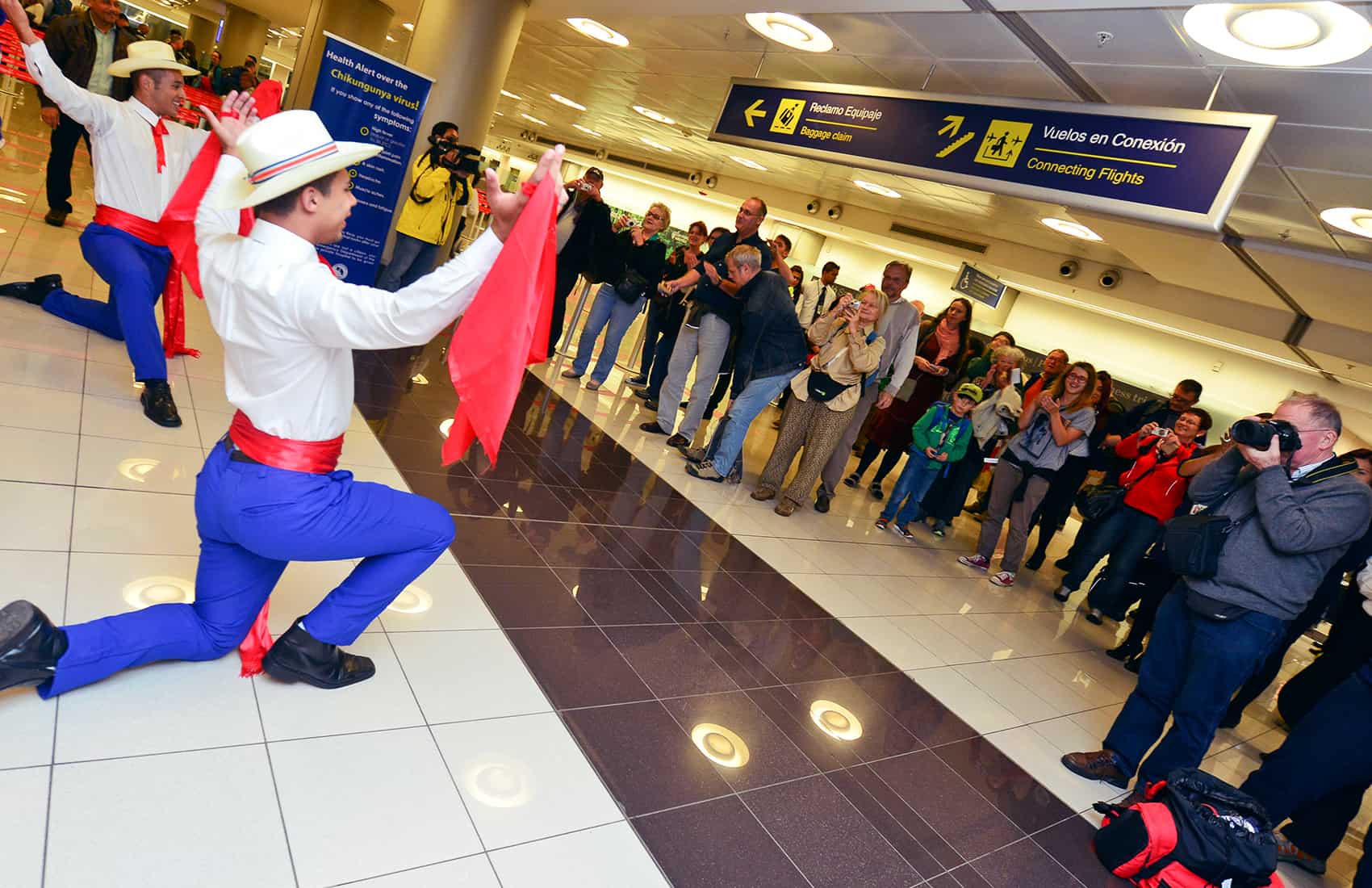Tourism Ministry officials on Thursday reported that revenues from Costa Rica’s travel sector last year totaled $2.6 billion, an 8.3 percent increase over the $2.4 billion registered in 2013, according to figures from the Central Bank.
Officials credited the 2,526,817 international arrivals registered in 2014, an increase of 4.1 percent over the previous year. That’s an increase of 98,876 arrivals by air, land and at ports, the Costa Rican Tourism Board (ICT) reported.
Tourism Minister Wilhelm Von Breymann said that the arrival figures are generated by crossing reports from the Immigration Administration and the ICT.
Air terminals still are the main ports of entry for international travelers, and the country’s two international airports — Juan Santamaría and Daniel Oduber — registered an increase in arrivals of 6.4 percent, or 103,509 travelers.
According to the Immigration Administration, this is the highest number since 2008 when the international crisis hit the tourism sector worldwide and in Costa Rica led to a decrease of more than 100,000 arrivals in 2009.
Von Breymann noted that 67.5 percent of international arrivals came from North American countries, followed by Europe at 16.5 percent and South America at 6.9 percent.
“The ICT’s promotional efforts this year will focus on attracting more tourists from those markets,” Marketing Director Alejandro Castro told The Tico Times.
The U.S. remains the main source of travelers, and in 2014, Costa Rica registered 936,929 arrivals from that country – a 7.6 percent increase from 2013. Arrivals from Canada also increased by 7.5 percent, according to the Immigration Administration report.
“Our research told us that the U.S. has a potential market of 65 to 70 million citizens who want to travel abroad, and some 16 million would be interested in a destination like Costa Rica. So there is still great potential for us to increase arrivals from there,” ICT’s Director of Strategic Planning Rodolfo Lizano said.
By percentage, however, the region that showed the most important hike was Europe, which grew by 19.9 percent. According to Immigration Administration records, Germany, France, Spain and the U.K. are the main sources of travelers from that continent. The only drop was registered by South American travelers, which decreased by 18.1 percent “driven mainly by the FIFA World Cup that attracted tourists to Brazil,” Lizano said.
He also said that greater revenues were influenced by an increase in tourists’ average stay, from 11.6 to 12.1 nights. That prompted a hike in the average per-person spending from $1,252 in 2013 to $1,378 last year.
“These variables reflect Costa Rica’s leadership in the region as our figures actually can be compared with those of major destinations around the world. Our direct competition is not in the region,” Lizano said.
Asked if the opening of relations between Cuba and the U.S. and the boost of the tourism industry in Nicaragua would affect Costa Rica, Von Breymann said he does not believe those countries represent direct threats to Costa Rica’s tourism sector.
“Cuba is basically sun and beach. We have a much wider variety of tourism options here, and the country’s size gives tourists the possibility to visit many different destinations in a short period of time. As for other countries in the region, our main advantage is the experience and development of our tourism industry, which is many years ahead,” he said.
According to the United Nations World Tourism Organization, regional countries such as Panama and Nicaragua last year registered average stays of eight days, while Cuba and Mexico reported 10 and 11 days, respectively.
ICT officials highlighted that another advantage for Costa Rica is its lodging capacity, as the country currently has 45,531 rooms, a figure that exceeds by far Panama’s 22,768 rooms and Nicaragua’s 11,189, according to World Tourism Organization figures.
Regarding the ministry’s plans for this year, von Breymann said officials have detected a strong potential in specialized types of tourism such as fashion, health and wellness, sports and events. He said officials are hoping to speed up construction of a National Convention Center, a key infrastructure project to attract event-related tourists.






